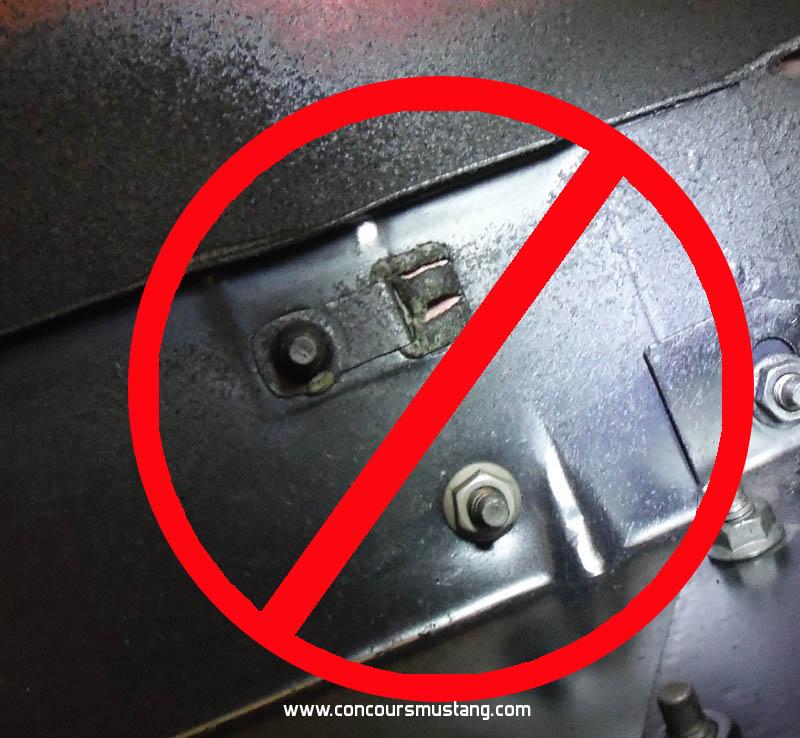NOTE: Split off from another thread concerning gas tank to body sealants
http://www.concoursmustang.com/forum/index.php?topic=3145.new#newWhen applied to the gas tank and fender area (SJ Mar) how much should Goosh out? Yeah, Goosh is a technical term!
Gas tank typically ..........................
Fenders often none IMHO was not covered. Every once in a while you might find a car where the end of the strand slide out but from the tens of thousands I've seen this was not the norm. Many of the picture threads of unrestored 67 San Jose and even 68's here on the sight will provide you with some examples
If its seen, its typically at the VIN cut out since the worker may have applied it fairly straight down the edge of the inner fenders not compensating allot for the cutout
Have tons of unrestored pictures where no sealant is visible but no reason to show them. Here are a few of the examples when the material was visible from the hood is open.
Product and color of the product. Once the product used is exposed to air and sun for many years if turns a lighter shade and becomes dry and chalky
In this freshly prier off example (removed from the location where the green arrow is) you can make out the chalky upper edge that was exposed and over time it continued to spread through the sealant drying out from the exposed edge inward. The Blue arrow shows an area not yet affected showing the original color of the product used
This example also provides an idea of how much product made up the strip applied to the inner fender panel
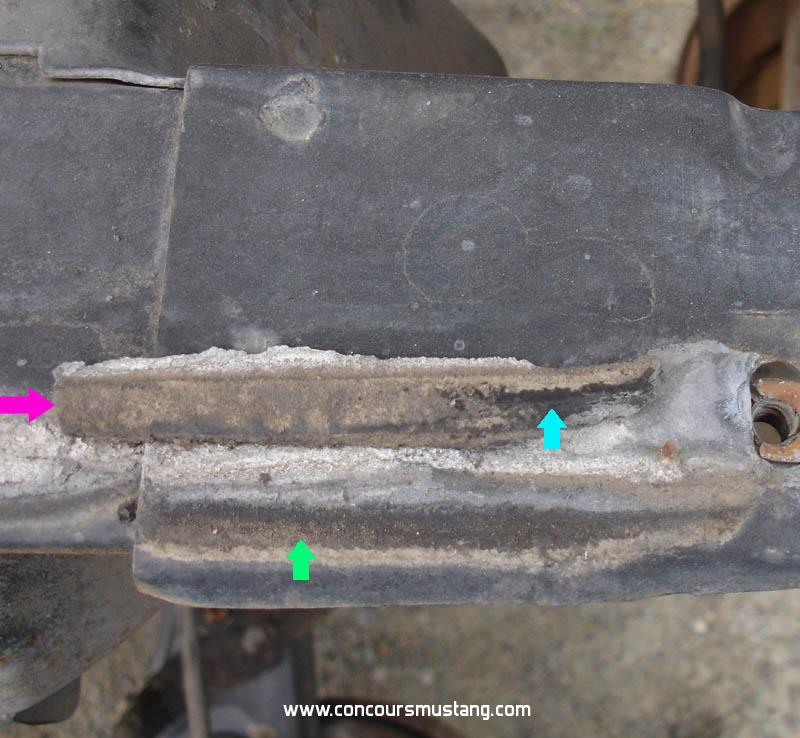
Here is an example that has been exposed for a while. Color has changed like the edge of the product shown in the example above.
Its bone dry all the way through as you can see as I scrapped through it and tried to pry it up like the other example above.
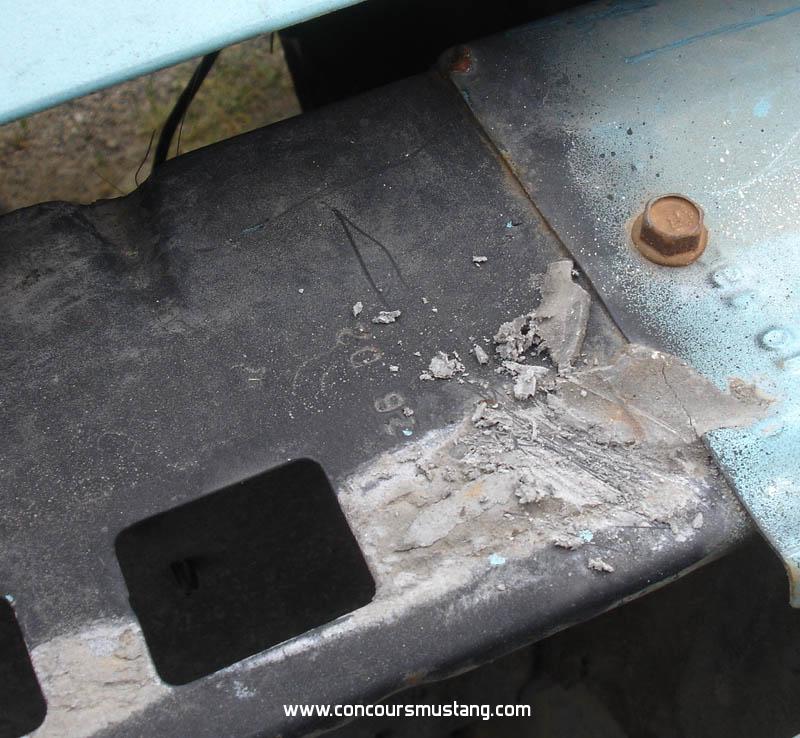
So if you want to include a "blow out" or "smooch"

somewhere in the engine compartment here are some original examples. Remember that exposed sealant will collect dust and dirt as well as micro fiber towels used for cleaning and plenty else
Took a bit to find these since as, mentioned allot of cars had no visible sealant from the engine compartment view. Hope these help
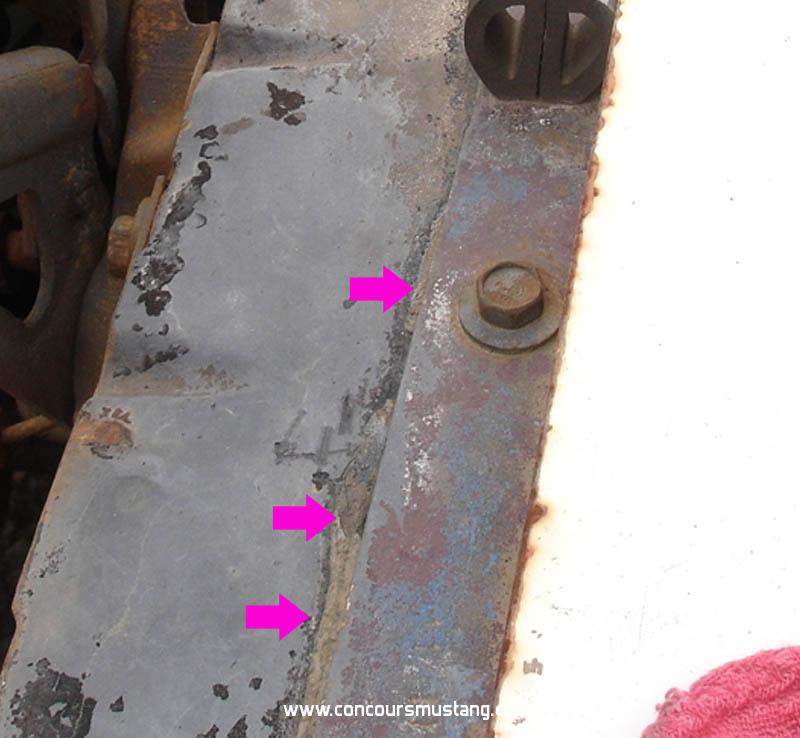
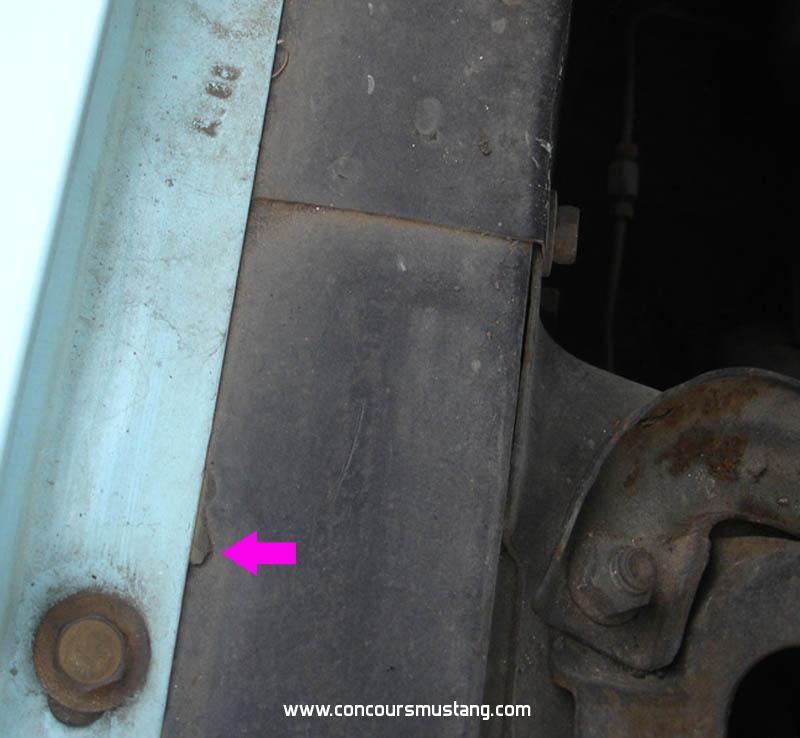
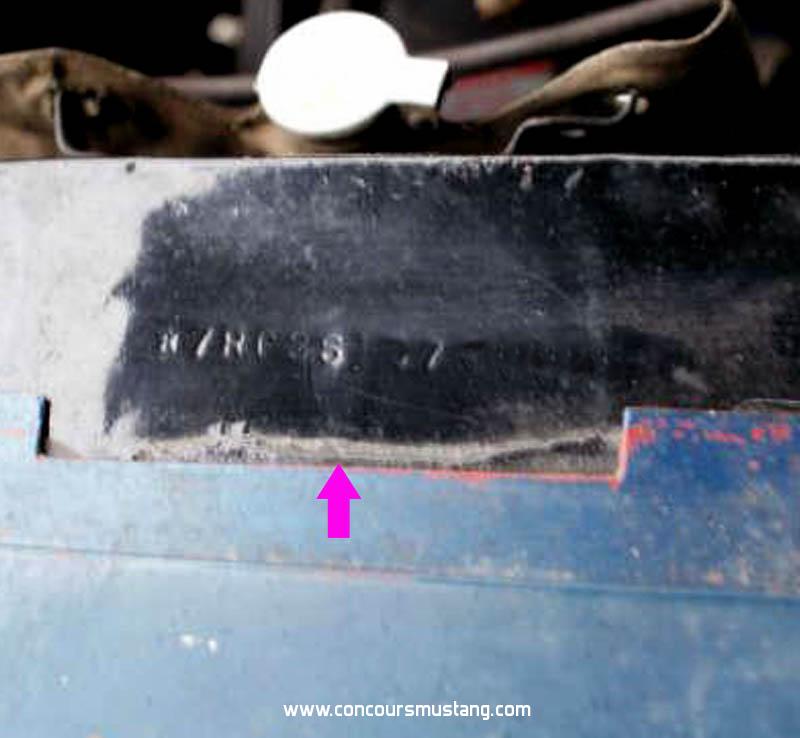
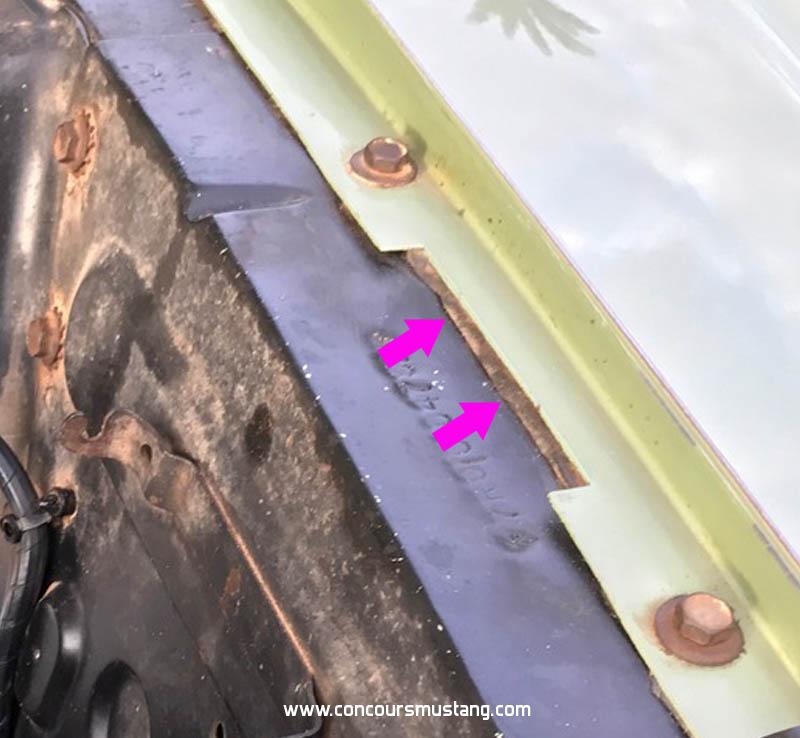
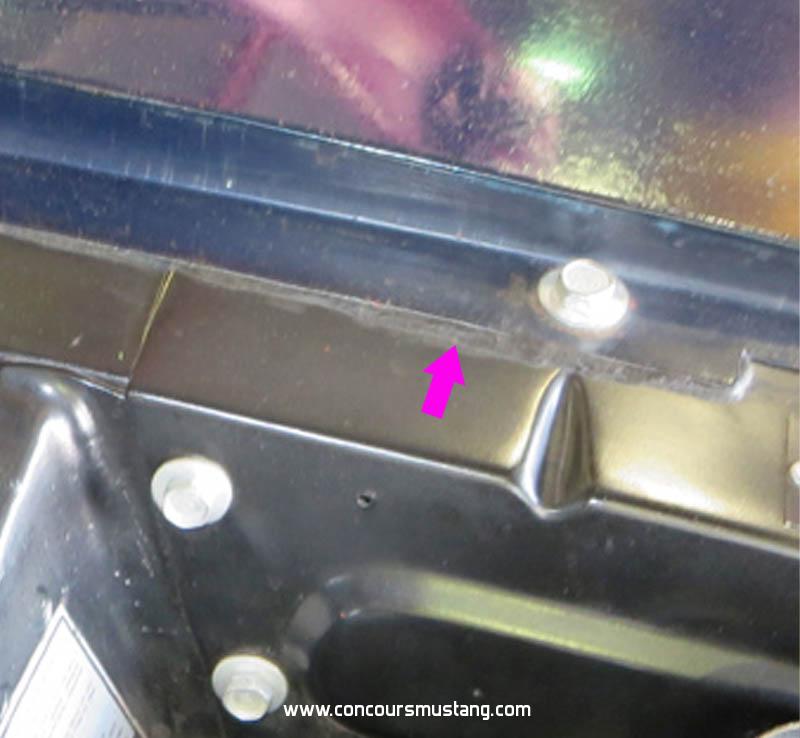
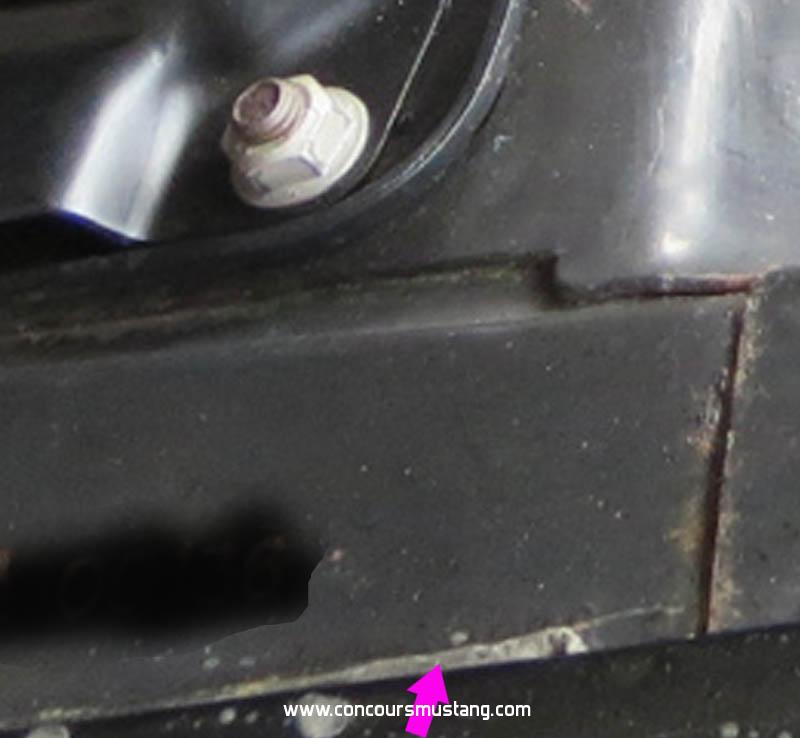
Remember that the product you use can be seen from the wheelwell so if you try and cut corners it may be uncovered there. Here a builder choose incorrectly to just run three small diameter/thin (out of the box) strips of strip chalking rather than work the strips together into one strand and apply it like originally done
